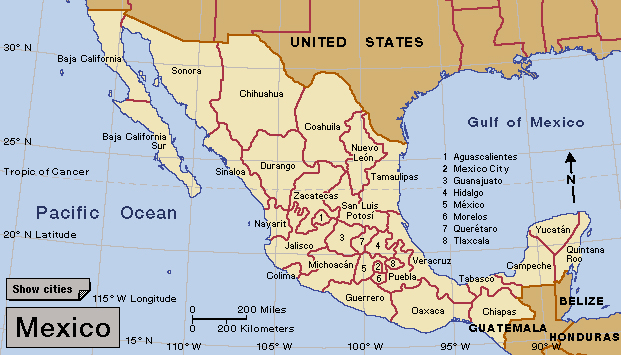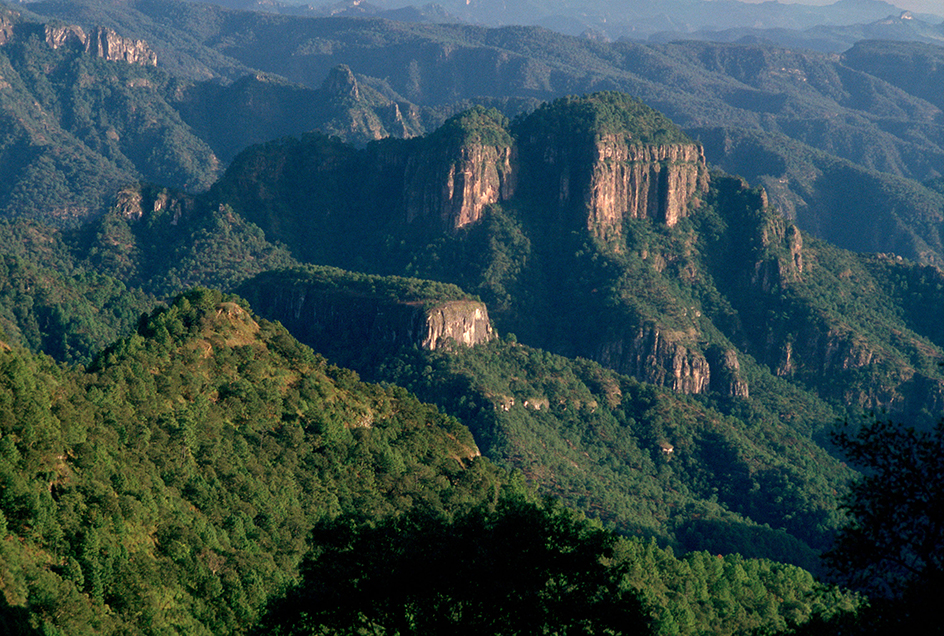Durango << doo RAHN goh, >> is a state in northwestern Mexico. It covers 47,560 square miles (123,181 square kilometers), making it one of the country’s largest states in area. However, Durango is sparsely populated. At the time of the 2020 census, it had 1,832,650 people. The Sierra Madre Occidental, a mountain range that extends from north to south in western Mexico, passes through western Durango. A high plateau covers the eastern part of the state. Much of Durango is extremely dry, but forests cover about 45 percent of the land. The city of Durango is the capital.

Mining, agriculture, and forestry are the most important economic activities in Durango. The state’s mining industry produces gold, silver, and other heavy metals. Farmers grow cotton, corn, wheat, fruits, and vegetables near the Rio Nazas (Nazas River). Elsewhere, agriculture is difficult without irrigation. Cattle ranching is an important activity in dry areas of the state. Other industries produce chemicals, glass, metal products, processed foods, and textiles.
The Tepehuan Indians lived in what is now Durango when Spain took control of the region in the 1500’s. The Tepehuan strongly resisted their Spanish conquerors. In 1563, the Spanish explorer Francisco de Ibarra founded the city of Durango, naming it after the town in northern Spain where he was born. Durango became one of Mexico’s original states in 1824. It is most famous as the birthplace of Pancho Villa, a leader in the Mexican Revolution of 1910.

